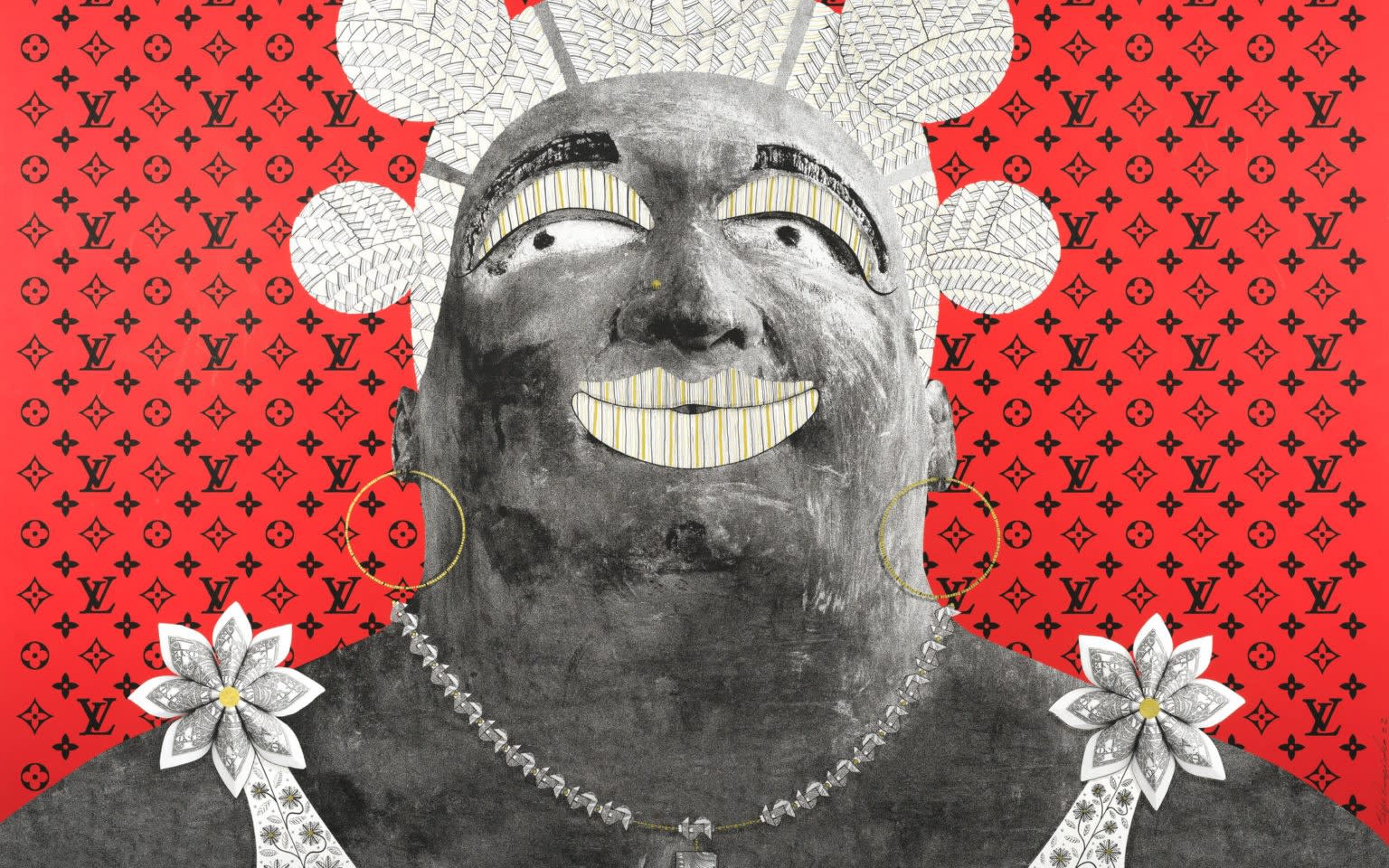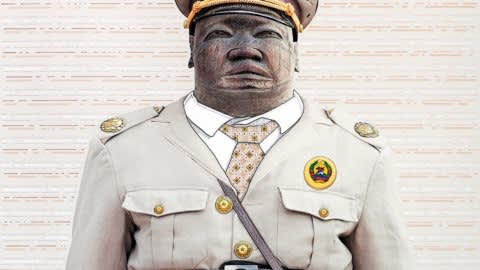Ca’ del Duca 3052, Corte del Duca Sforza
San Marco, 30124, Venezia, Italy
Mon – Sat 10am – 7pm
From 29 June to 5 November 2023 The MUSEC | Museo delle Culture in Lugano (Switzerland) hosts Branquinho (Maputo, Mozambique, 1977), an exponent of African art.
The MUSEC exhibition presents about thirty large-scale works (mixed techniques on cotton paper and photographs) created between 2019 and 2022 by White, Mozambican artist which investigates social issues, popular customs, mythologies and urban dynamics of their country.
Humor and Satire
In his works we find a touch of humor and a keen sense for satire, as a strategy to bring to light the intertwining of values and contradictions of Mozambique and common to other African countries. Thus opening a debate and a space towards social criticism in order to improve the best quality and a future of the Afican community.
Art from themes of political-social relevance
Works where tradition and modernity blend perfectly where the traditional Mapiko masks of the Makonde, a widespread ethnic group in northern Mozambique, become caricatures to tell real facts and people, as they were sometimes also used in the secret Makonde ritual dances. The title of the exhibition, Lipiko, refers to the name of the dancer who wears the mapiko mask and embodies its disturbing spirit.

Filipe Branquinho, Rosary, 2022, © Filipe Branquinho AKKA Project
The Lipiko series opens the exhibition
The selection of works of the Lipiko series, in which Branquinho lays bare the socio-political void of Mozambique. The inspiration comes from the more than 2 billion dollar scandal of the so-called "Tuna bonds", funds which since 2012 were supposed to finance an important development project for tuna fishing and tuna processing in Maputo, but which were actually recycled and used to bribing government officials. They portray imaginative colored fish and characters of power (politicians, fixers, judges or lawyers), in which the features of the face are replaced by traditional mapiko masks.
While with the Bestiarium series deals with a series of photographs taken between 2020 and 2021, in the midst of the pandemic. Human figures with faces covered by zoomorphic masks. These "bestiaries" of imaginary beings represent for the artist the mirror of man. Branquinho's shots thus reveal a latent restlessness, which activates a tension between the observer and the work leading to wonder: how much of the beast is inside our?
On display, as a counterpoint to Branquinho's works, are 14 makonde masks, used by the artist to create an installation, partly displayed alongside the works that portray them.
Finally Series Gold we Trust, an ironic metaphor of Mozambican society with grotesque characters bartering the values of their culture with products from the globalized luxury industry: from fashion to tobacco, from private jets to horse bets, from wines to watches. They all are status symbol linked to the American dollar, which become origami imprinted on the canvas.
As curator Lidija Kostic Khachatourian summarizes, “Filipe's work is very profound, it delves into the heart of Mozambique's culture, politics, ways of life, the country's natural beauty, customs, corruption and its monstrosities".
The exhibition is the second chapter of the project Global Aesthetics of MUSEC, dedicated to the exploration of the relationship between contemporary art and the ideological and cultural context in which it moves, which starts from Asia and Africa, today lively laboratories of artistic experimentation.
The exhibition is accompanied by a catalog in English published by the Foundation of cultures and museums in its "Global Aesthetics" series.
Biographical notes
Filipe Branquinho was born in Maputo, the capital of Mozambique, in 1977 and now lives between Maputo, San Jose' (Costa Rica) and Madrid. He grew up during the civil war in Mozambique, which lasted from 1976 to 1992, in an environment strongly linked to the world of journalism and the arts. He approached the visual arts thanks to contacts with some important Mozambican photographers, such as Ricardo Rangel, Kok Nam and José Cabral. He studied architecture first in Mozambique and then in Brazil, where he began a process of self-taught exploration of photography and art that has led him to become one of Mozambique's most reputed artists. He has presented his works in solo and group exhibitions in Mozambique, Mali, United Arab Emirates, Italy, France, England and Switzerland. The MUSEC exhibition is his first solo exhibition in Switzerland.


